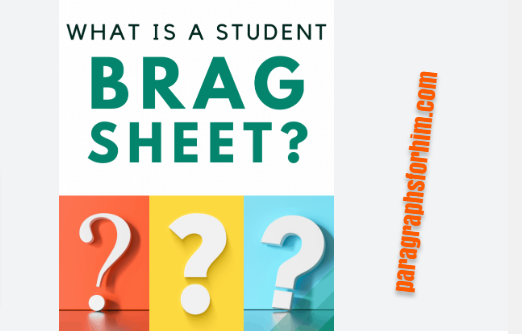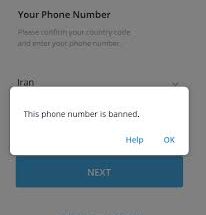A recommendation letter brag sheet is a document that you can use to provide potential employers or other decision-makers with a snapshot of your qualifications and accomplishments. It is similar to a resume, but it is specifically designed to highlight your strengths and potential.
Writing a recommendation letter can be a daunting task, especially if you’re unsure of what information to include. A well-crafted recommendation letter requires specific details and anecdotes that highlight the strengths and achievements of the individual you are recommending. To ensure you capture the most relevant information, a brag sheet can serve as a valuable tool. In this article blog post, we will guide you through the process of creating a recommendation letter brag sheet in six easy steps.
By following these steps, you can streamline the letter-writing process and create a compelling and impactful recommendation.
⇒Join us on Telegram for more Sure and Accurate football-winning tips every day...click here
Step 1: Gather Information: Start by gathering all relevant information about the person you are recommending. This includes their name, contact information, the purpose of the recommendation letter, and any specific qualities or accomplishments you want to emphasize. If possible, ask the individual for their resume, transcript, or any other relevant documents that can provide additional insights.
Step 2: Identify Key Strengths: Take time to reflect on the individual’s strengths and notable achievements. Consider their personal attributes, academic or professional accomplishments, leadership abilities, and unique skills. Make a list of these key strengths and prioritize them based on their relevance to the purpose of the recommendation.
Step 3: Collect Specific Examples: To make the recommendation letter impactful, it’s crucial to support your claims with specific examples. Reach out to the person you are recommending and ask them to provide specific instances where they demonstrated their strengths or achieved significant milestones. These examples will add credibility to your letter and provide concrete evidence of the individual’s abilities.
Step 4: Structure the Brag Sheet: Create a clear and organized structure for your brag sheet. Start with an introduction that briefly explains your relationship with the individual and your qualifications to write the recommendation. Then, devote separate sections to each key strength or attribute you identified earlier. Under each section, provide a brief description of the strength, followed by specific examples that illustrate it. Ensure your examples are concise and relevant, and highlight the individual’s impact or contributions.
Step 5: Edit and Refine: Once you have completed the initial draft of your brag sheet, review and refine it. Pay attention to the overall flow, clarity, and coherence of the content. Eliminate any irrelevant or redundant information, and ensure that the examples you provide effectively showcase the individual’s strengths. Proofread carefully for grammar, spelling, and punctuation errors to present a polished final version.
Step 6: Share the Brag Sheet: Once you have perfected your brag sheet, share it with the person you are recommending. Give them the opportunity to review and provide feedback or suggest any additional information they would like to be included. Collaborating with the individual can help ensure the final recommendation letter accurately represents their achievements and goals.
Writing a recommendation letter can be a rewarding experience when you have a well-structured brag sheet to guide you. By following these six steps, you can efficiently gather the necessary information, identify key strengths, collect specific examples, and create a compelling recommendation. Remember to tailor each recommendation letter to the specific purpose and audience to maximize its impact. With a thoughtful and well-crafted brag sheet, you can confidently write recommendation letters that highlight the talents and accomplishments of those you recommend.
Here are some additional tips for writing a recommendation letter brag sheet:
- Tailor your brag sheet to the specific audience you are targeting. If you are applying for a job, you should highlight the skills and experience that are relevant to the position. If you are using a brag sheet to promote your business, you should focus on your company’s unique selling points.
- Keep your brag sheet concise and to the point. A one-page brag sheet is ideal.
- Use visuals to break up your text and make your brag sheet more visually appealing.
- Include a call to action at the end of your brag sheet. This could be a link to your website, a contact email address, or a call to follow you on social media.
Here are some examples of accomplishments you could include on your brag sheet:
- Increased sales by 15% in your first year at your current job.
- Led a team of 10 people to successfully complete a complex project.
- Won an award for your outstanding work.
- Published an article in a peer-reviewed journal.
- Gave a presentation at a conference.
A recommendation letter brag sheet is a valuable tool that can help you promote yourself to potential employers, clients, or collaborators. By following the tips in this article, you can write a brag sheet that highlights your accomplishments and helps you achieve your goals.
Building Your Bragging Sheet: Key Steps to Follow for Success
We will now guide you through the key steps to follow when building your bragging sheet, ensuring that it effectively highlights your qualifications and sets you apart from the competition.
-
Identify Your Goals and Target Audience:
Before you begin building your bragging sheet, clearly define your goals and identify your target audience. Consider the specific opportunity you are pursuing, whether it’s a job, scholarship, or program. Tailoring your bragging sheet to match the expectations and requirements of your target audience will significantly enhance its effectiveness.
-
Compile a List of Accomplishments:
Make a comprehensive list of your accomplishments, experiences, and qualifications. Include academic achievements, extracurricular activities, internships, volunteer work, leadership roles, and any other relevant experiences. Be sure to focus on those achievements that align with your goals and target audience.
-
Quantify and Provide Context:
Quantify your accomplishments wherever possible. Include specific numbers, percentages, or results to provide context and demonstrate the impact of your achievements. This helps to add credibility to your bragging sheet and provides tangible evidence of your abilities.
-
Organize and Structure Your Bragging Sheet:
Organize your bragging sheet in a logical and easy-to-read format. Use headings, subheadings, and bullet points to create a clear structure. Consider grouping your accomplishments into relevant categories, such as academic achievements, leadership roles, and extracurricular activities.
-
Emphasize Skills and Abilities:
Highlight your key skills and abilities throughout your bragging sheet. For each accomplishment or experience, focus on the skills you utilized or developed. Use action verbs and descriptive language to convey your capabilities effectively. Showcase the skills that are most relevant to your goals and target audience.
-
Include Testimonials and Recommendations:
To add credibility and validation to your bragging sheet, include testimonials or recommendations from professors, employers, or mentors who can speak to your abilities and character. These can be in the form of quotes or excerpts that highlight specific strengths or achievements.
-
Proofread and Edit:
Thoroughly proofread and edit your bragging sheet to ensure it is error-free and well-polished. Check for spelling, grammar, and formatting mistakes. Consider asking a trusted friend, family member, or mentor to review it for feedback and suggestions.
-
Update Regularly:
Keep your bragging sheet up to date by adding new accomplishments and experiences as they occur. Continuously refine and enhance your bragging sheet to reflect your ongoing achievements. Regular updates ensure that your bragging sheet is always ready to be shared when opportunities arise.
-
Create a Digital Version:
Consider creating a digital version of your bragging sheet to complement the traditional printed format. This can be in the form of a personal website, online portfolio, or LinkedIn profile. A digital version allows for easy sharing and ensures that potential employers or decision-makers can access your accomplishments conveniently.
A brag sheet typically includes the following information:
- Personal Information: Name, contact details, and any relevant identification information.
- Academic Achievements: List of academic honors, awards, scholarships, GPA, class rank, relevant coursework, research projects, or academic leadership roles.
- Extracurricular Activities: Description of involvement in clubs, sports teams, community service, volunteering, leadership positions, or any other significant contributions outside of academics.
- Work Experience: Summary of internships, part-time jobs, or relevant professional experience, including job responsibilities and accomplishments.
- Skills and Abilities: Overview of technical skills, language proficiency, computer skills, certifications, or specialized training.
- Projects and Presentations: Highlights of any significant projects, presentations, or research work completed, including details on the scope, objectives, outcomes, and impact.
- Awards and Recognitions: List of honors, awards, or other forms of recognition received for achievements in various areas, such as academics, sports, arts, or community involvement.
- Leadership Roles: Description of leadership positions held in organizations, clubs, or teams, demonstrating skills in management, teamwork, and decision-making.
- Community Involvement: Explanation of participation in community service, volunteer work, or involvement in initiatives that contribute to the betterment of society.
- Personal Goals and Interests: A brief statement about personal goals, passions, and any unique interests that highlight the individual’s personality and values.
A brag sheet helps individuals present a comprehensive overview of their accomplishments and experiences, making it easier for others, such as employers, college admissions officers, or recommenders, to understand their strengths and qualifications. It serves as a valuable reference when writing resumes, personal statements, cover letters, or recommendation letters, ensuring that important details and achievements are not overlooked.
Conclusion:
Building an impressive bragging sheet is essential for effectively showcasing your qualifications and standing out from the competition. By following the key steps outlined in this SEO-optimized article, you can create a compelling bragging sheet that highlights your achievements, skills, and experiences. Remember to tailor your bragging sheet to your goals and target audience, quantify your accomplishments, emphasize your skills, and regularly update it to reflect your ongoing achievements. With a well-crafted bragging sheet, you can confidently present yourself as a standout candidate and increase your chances of success in various opportunities.




